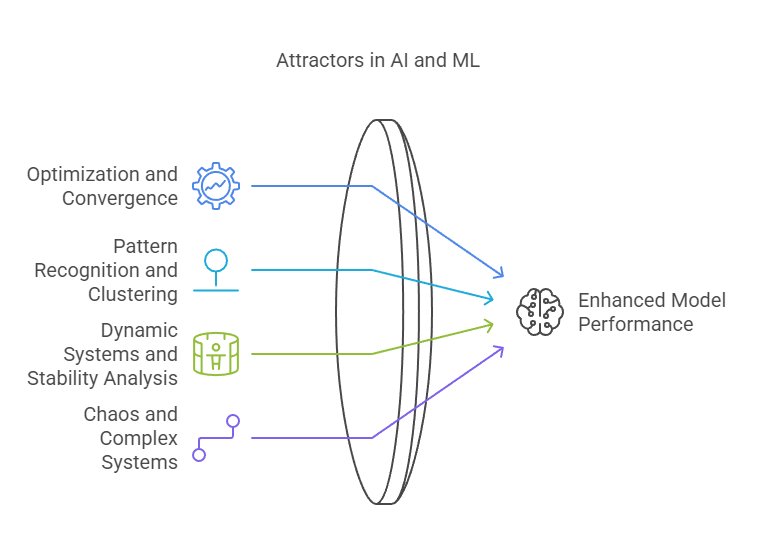In AI, an attractor refers to a set of states or patterns toward which a system tends to evolve, regardless of its initial state, often used in the context of machine learning and dynamical systems. Attractors help describe the stable outcomes or behaviors a model might settle into after undergoing training or various iterations of adjustment.

In practical AI and machine learning contexts, attractors are relevant in areas such as:
- Optimization and Convergence: In training neural networks, for example, the weights often settle into a local minimum (or ideally, a global minimum) in the loss function, which acts as an attractor. Here, the model’s parameters gravitate toward values that minimize error over time.
- Pattern Recognition and Clustering: Attractors describe patterns in the data that a model identifies as stable, such as clusters in unsupervised learning. Models like Self-Organizing Maps (SOMs) or k‑means clustering seek to identify attractors as central points or patterns around which data points naturally group.
- Dynamic Systems and Stability Analysis: In reinforcement learning, the concept of attractors might apply when an agent’s policy stabilizes around optimal behavior after repeated episodes of learning, meaning it gravitates toward certain decisions or actions that yield the best outcomes.
- Chaos and Complex Systems: In more advanced contexts, such as recurrent neural networks or chaotic systems, attractors (like strange attractors) help model complex, often unpredictable behaviors that can still exhibit underlying patterns, making them useful in applications like time-series prediction or modeling biological processes.